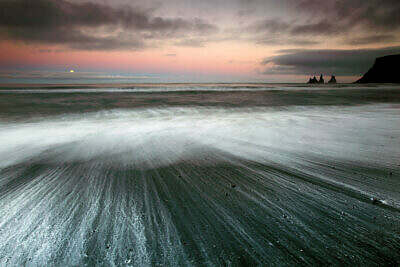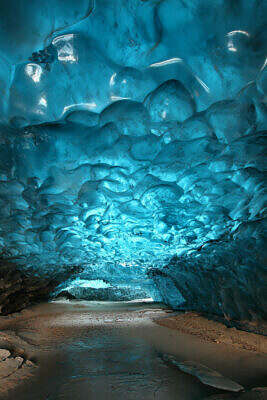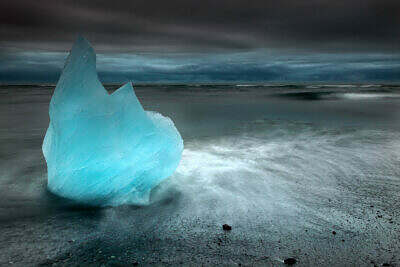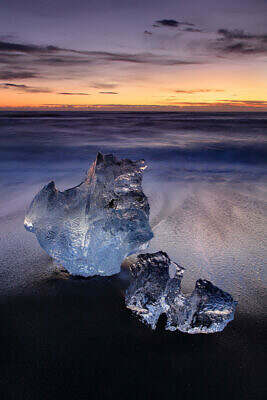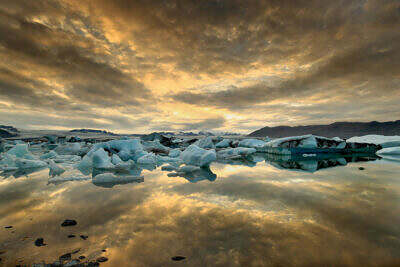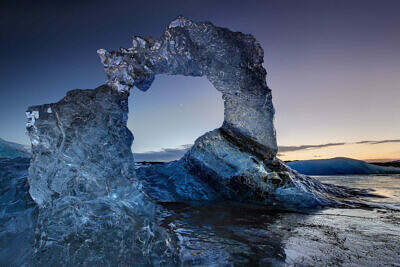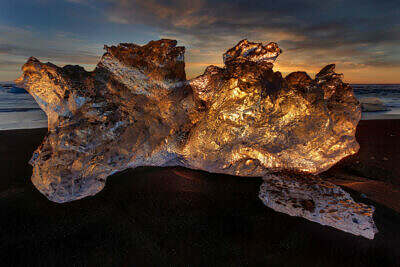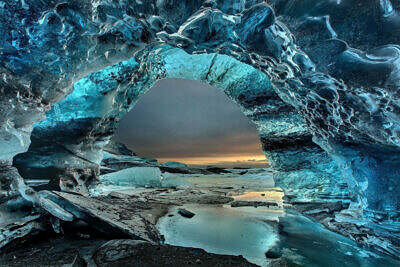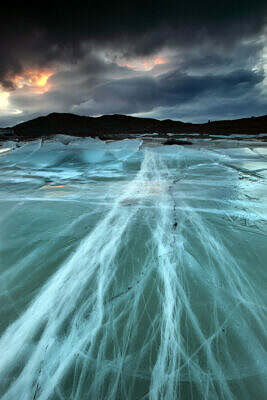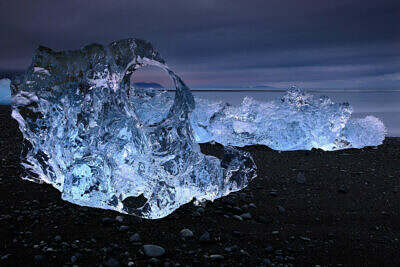Tipped-over icebergs reveal their meltwater forms filled with volcanic ash on the frozen glacier lake lagoon Jökulsárlón during the winter of Iceland.
Wandering through this frozen landscape lies far outside the comfort zone. Spellbound in awe by these fascinating vistas, it is a challenge to withstand the drifting sand, the blowing ashes and the immense cold. In such storm winds at around -8°C (18°F), the perceived temperature drops down to -35°C (-31°F).
-
Volcanic ash on an topped-over iceberg on the Icelandic glacier lagoon
Nature's Artwork
- Lovelier in Black
- Entering the Enchanted Realm
- Evanescence
- Beached Jewels
- Twilight of the Gods
- Arctic Gate
- Elucidated
- The Crystal Grotto
- The Spirit of Iceland
- Crystal Beach


